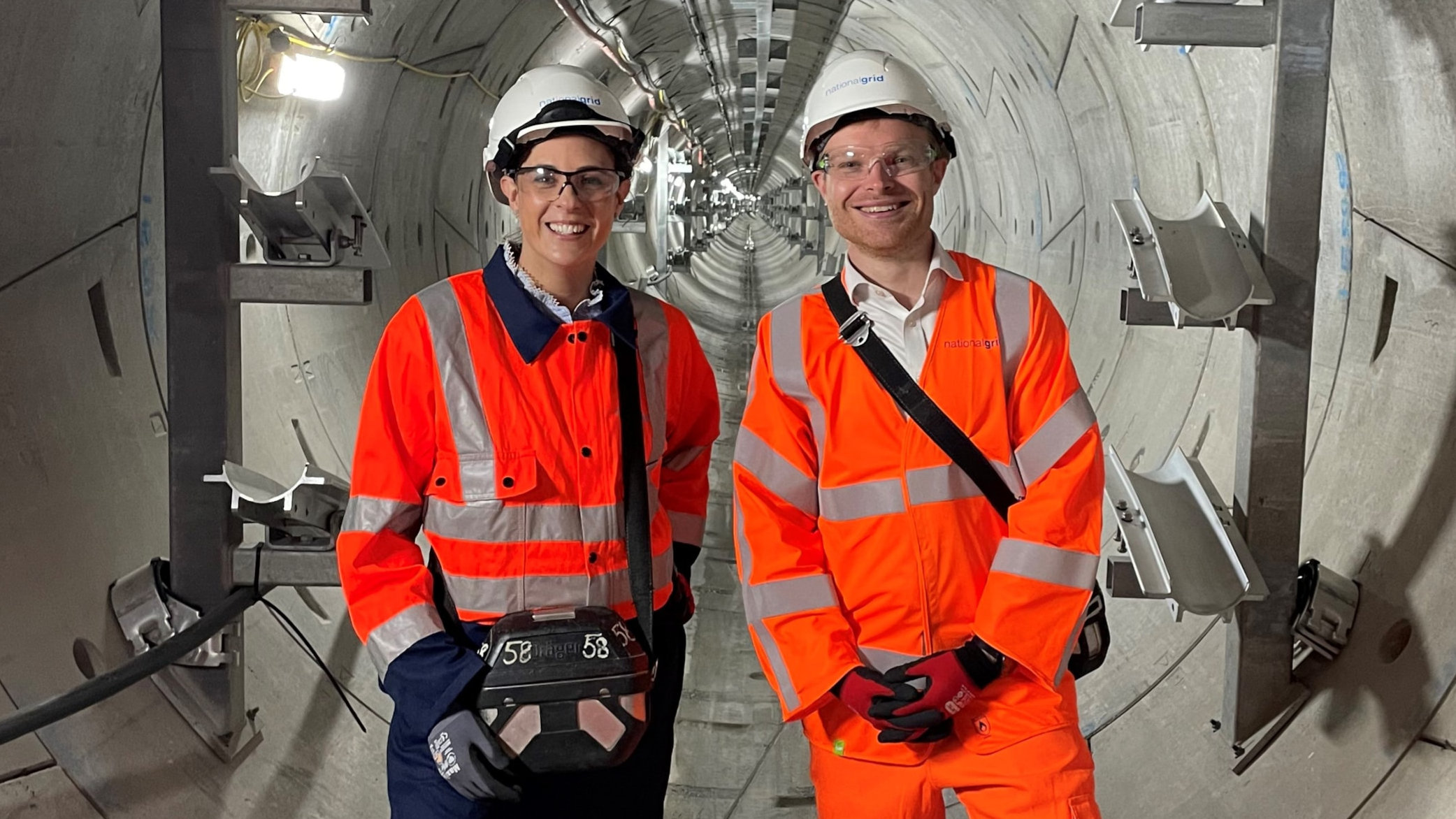Energy minister Michael Shanks visited National Grid’s £1 billion London Power Tunnels 2 (LPT2) project as engineers energised the first of its six new electricity transmission circuits installed deep underground in South London.
The energisation sees 2.5km of new high voltage 275kV network made live between Hurst substation and Crayford – a tunnel route averaging 35 metres below ground which was completed by Christine the tunnel boring machine last year.
Mr Shanks visited New Cross substation, a key site at which work is ongoing on the project’s two other double circuits – one between Wimbledon substation and New Cross (12km), the other between New Cross and Hurst (18km).
Also under construction on the 32.5km LPT2 route is a new substation at Bengeworth Road, which – in a UK-first – is being built using SF6-free gas insulated switchgear technology.
The previous cables between Hurst and Crayford were reaching the end of their operational life, having been commissioned in 1967 and having served London reliably for decades.
While the old cables were buried in shallower trenches in the streets, the LPT2 network carries power in three metre wide tunnels deep beneath the road network, with vertical shafts between 9-15 metres wide and up to 55 metres deep sitting above the tunnels at key points along each circuit, each one covered by a headhouse.
The headhouses and shafts provide ventilation and safe access for project teams, meaning less construction and maintenance disruption, and easier future upgrade potential.
Alice Delahunty, president of National Grid Electricity Transmission, said, “We were pleased to welcome the minister at such a milestone moment for London Power Tunnels, and demonstrate the ongoing work to reinforce the city’s network.
“There’s still a way to go on the project, but the Hurst-Crayford circuit seeing volts for the first time is a tremendous achievement for our National Grid teams and supply chain partners.
“It’s hard to overstate what an engineering challenge it has been to build over 30km of tunnels under London to upgrade and futureproof the capital’s electricity supplies, so the project’s progress to date is a real testament to all those involved.”
Energy minister Michael Shanks said, “The London Power Tunnels show British infrastructure at its best and I congratulate the efforts of everyone involved, as this new circuit switches on to power up homes and businesses across the capital.
“It is feats of incredible engineering, such as this, that will be the driving force behind our race to become a clean energy superpower and help to revive communities across the UK with new skilled jobs.”
The current London Power Tunnels project is the second phase of a massive endeavour to reinforce the capital’s electricity network in readiness for demand growing in the future.
It follows the completion in 2018 of the first phase – a seven-year, £1 billion project to construct 32km of tunnels and two new substations to rewire the network in North London.




